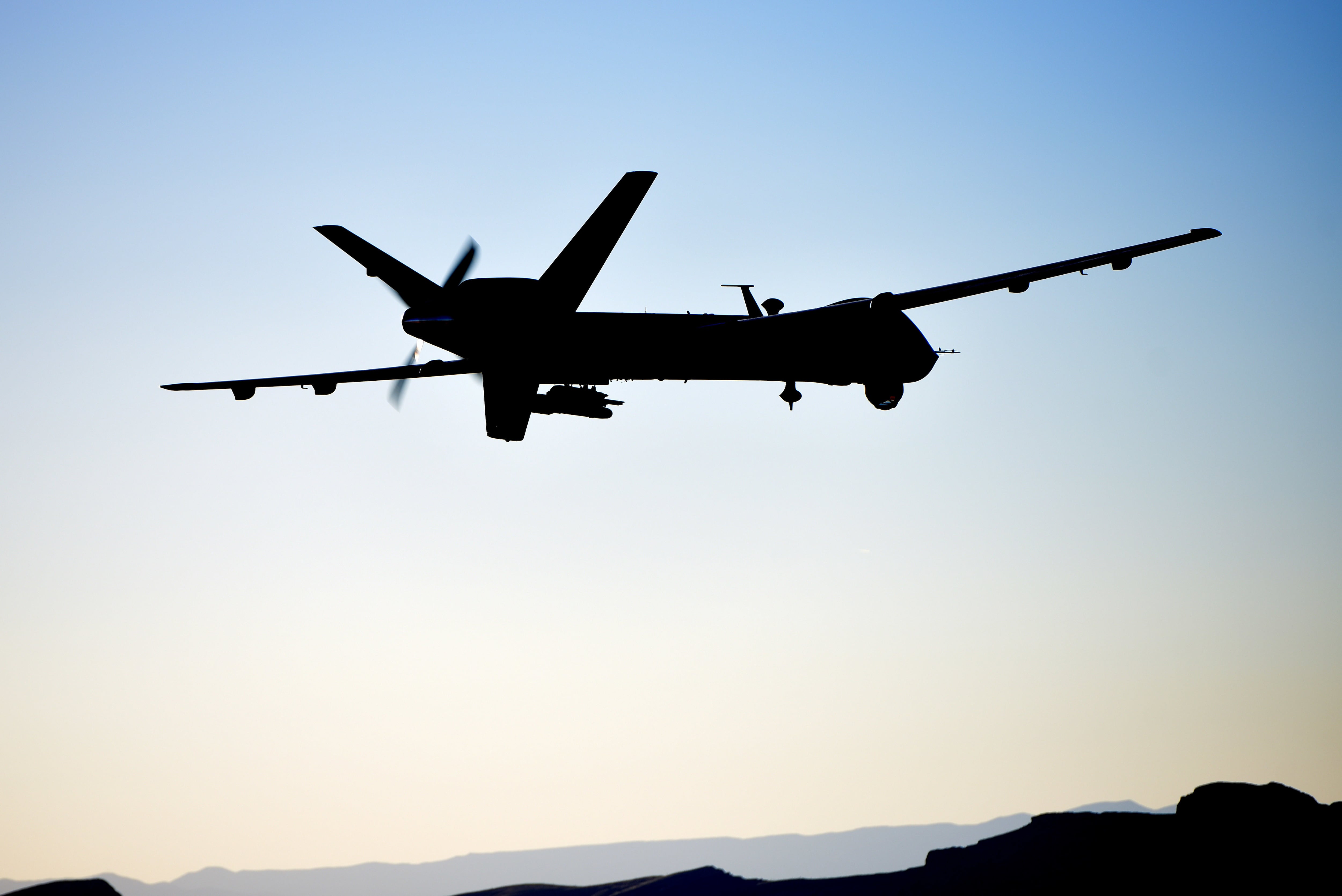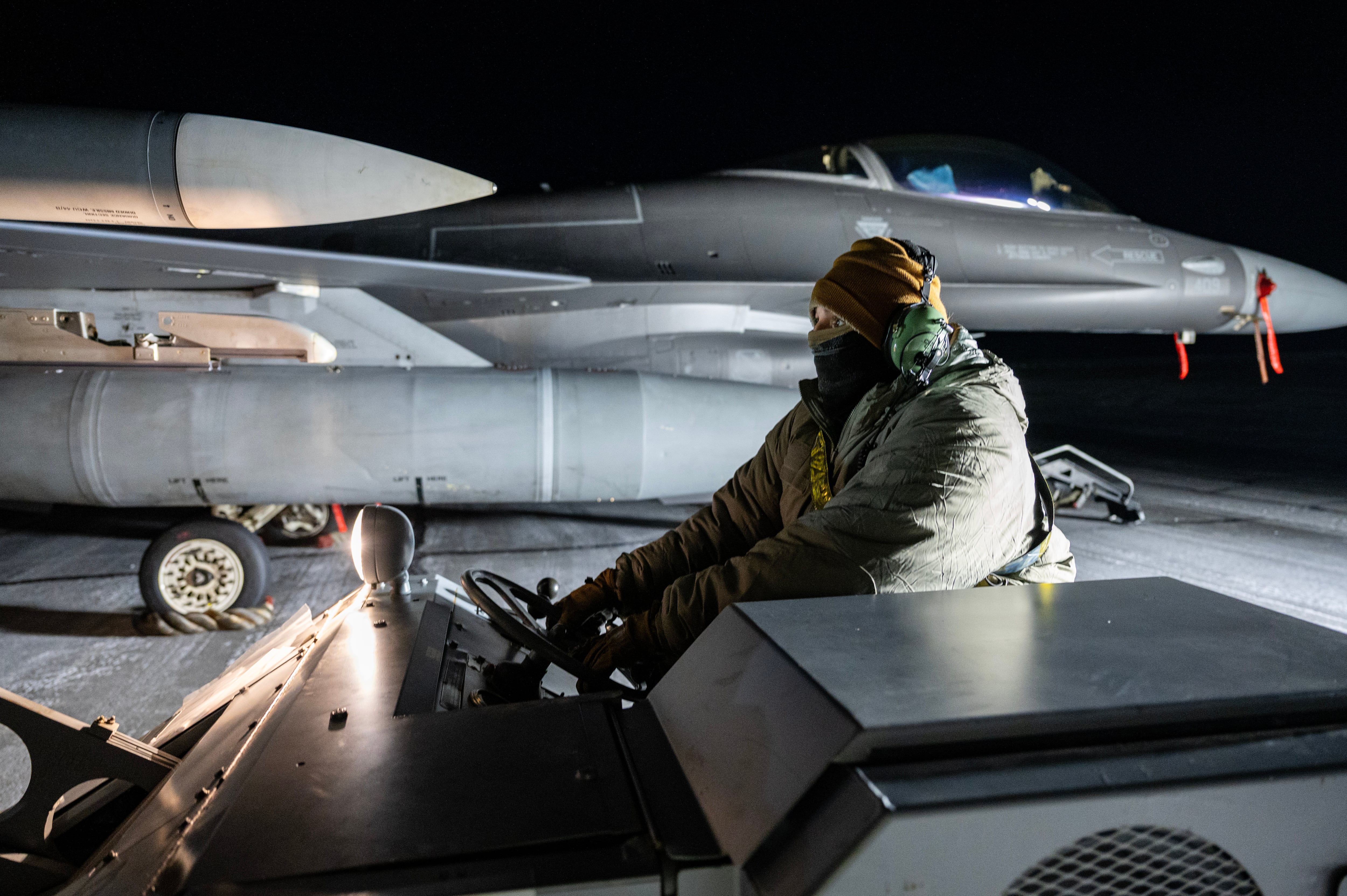MIROSŁAWIEC AIR BASE, Poland — On an unseasonably chilly, overcast and rainy day in late August in Poland, an electric-powered aircraft tractor towed an MQ-9A Reaper drone out of a hangar.
U.S. airmen and officials stood ready to perform and observe the demonstration of a novel, mobile satellite launch and recovery package for the American drone, opening up a host of new land-based sites from which the Reaper could operation in inclement weather.
The proof of concept — which ultimately succeeded and involved U.S. Air Forces in Europe and Air Forces Africa, Air Combat Command, and the 435th Contingency Response Group assigned to Ramstein Air Base in Germany — took place at the Polish Air Force’s 12th Unmanned Aerial Vehicle Base outside of Mirosławiec.
Should an MQ-9 need to land there, a handful of maintainers qualified to service Reapers would need only to hop on a commercial flight with the clothes on their back, as all the necessary gear will already be in place.
The base is now “open for business” and ready to welcome any MQ-9A that needs to land there for basic maintenance, said Air Force Maj. Philip “Flip” West, the project lead for the satellite launch and recovery package, or SLR-P, for U.S. Air Forces in Europe and Air Forces Africa.
West, a former Reaper pilot, envisioned the package as including the absolute minimum equipment maintainers would need to service an MQ-9A on any base in the world, contained in two conex boxes. The SLR-P includes the Portable Aircraft Control Station developed by MQ-9 manufacturer General Atomics, a starter cart, an electric towbarless aircraft tractor to transport the aircraft into a hangar, and refueling capabilities.
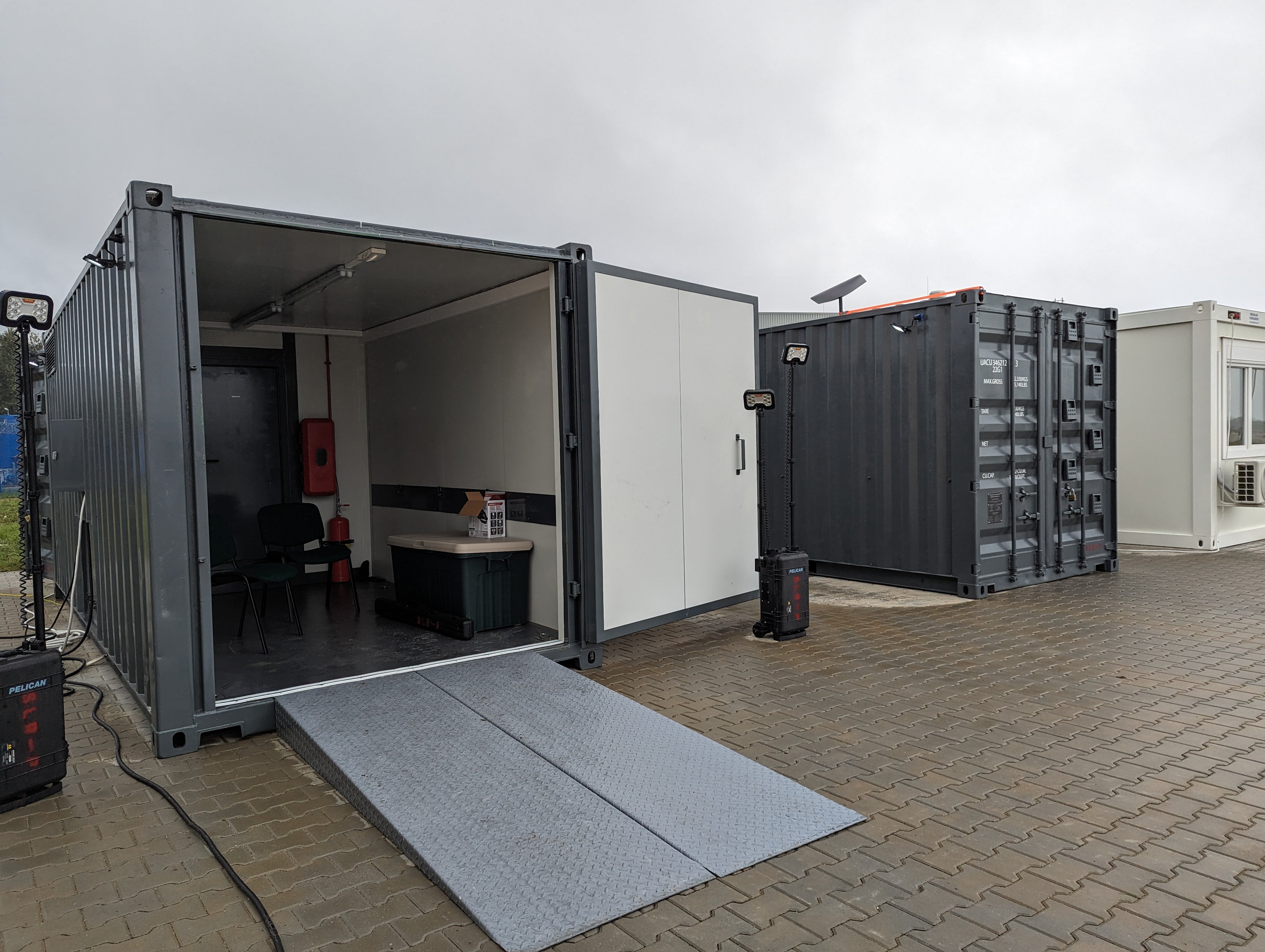
The event last month sought to demonstrate that a handful of maintainers could turn on the aircraft and hand control over to drone operators with the Pennsylvania Air National Guard, using only the equipment contained in the SLR-P, after which the Reaper would then take off and perform a routine sortie.
A thunderstorm had settled over Eastern Europe during the Aug. 30 proof of concept, grounding the aircraft until the following day. Nonetheless, the SLR-P operated as intended, with maintainers using the Portable Aircraft Control Station to get the MQ-9 up and running before handing over control to operators in Pennsylvania, West said.
This wasn’t the only “first” to take place on the Polish base for that Reaper; its landing at the 12th UAV Base prior to the proof of concept was the first weather diversion for the drone to a previously unrecorded runway in Europe. Now, that MQ-9 has mapped the entire runway, allowed any U.S. Air Force Reaper to access the file for easy landing in Mirosławiec.
“This was a huge deal for us,” West said. “Instead of canceling, we diverted the aircraft to the alternate airfield and proved that it can be done [in the] real world, not in a training environment.”
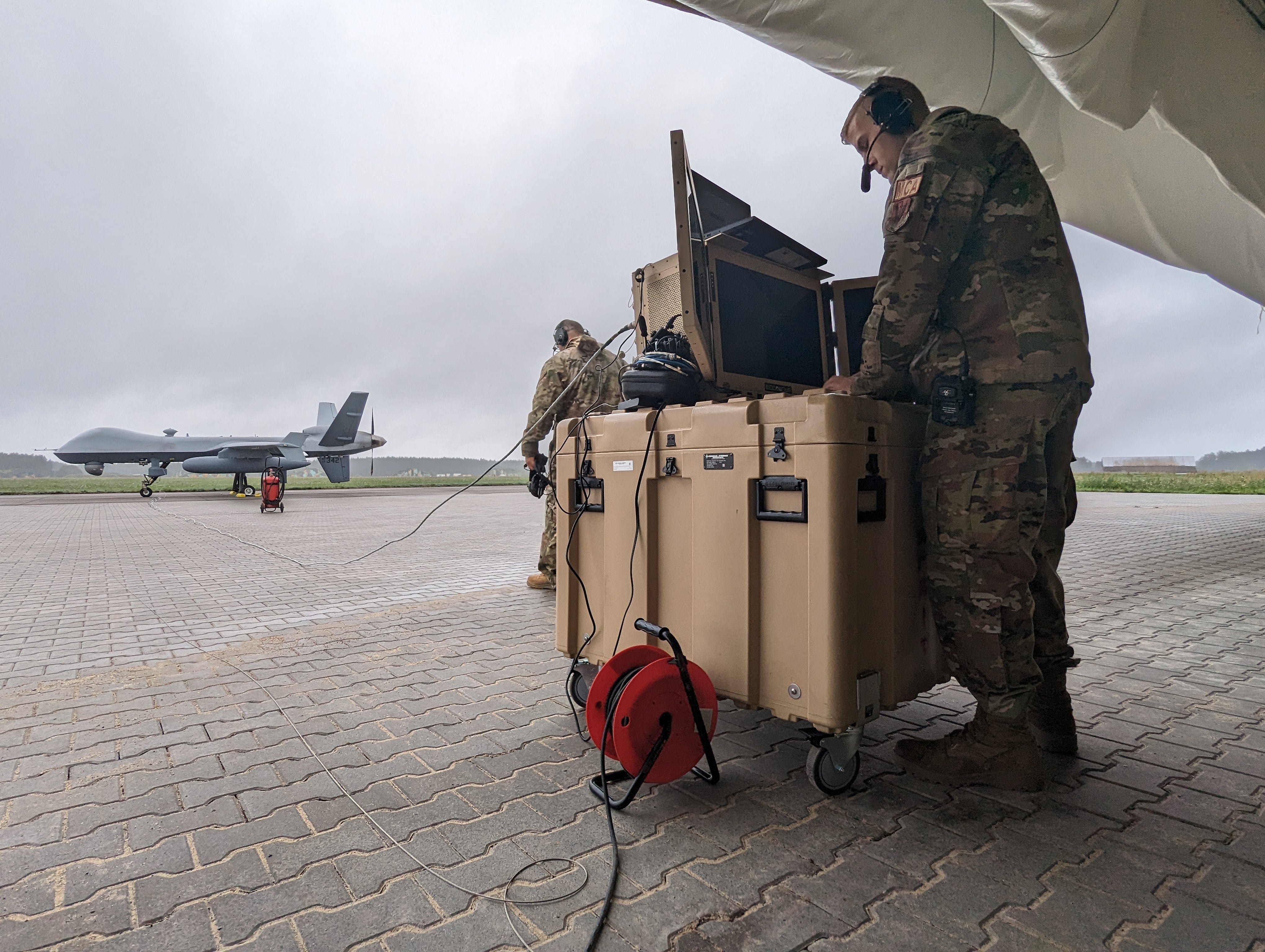
U.S. Air Forces in Europe and Air Forces Africa unilaterally acquired the Portable Aircraft Control Station in February, a move that caused consternation at Air Combat Command, a representative told Defense News at Mirosławiec, speaking on the condition of anonymity because the individual was not authorized to speak to the media on behalf of the military.
For West, the need to move quickly to develop the SLR-P — and thus directly procure Portable Aircraft Control Stations — was justified. “The events of last year were the driving factor behind the need for us to move faster than the rest of the MQ-9 community,” he said, referring to Russia’s full-scale invasion of Ukraine that began in February 2022.
“When I acquired our own PACS, we were the first air component to own and control our own equipment, which means we can do with it what we want and how we want to do it,” West said. “We maintained our relationship with ACC by following the exact same regulations and maintenance rules that they follow, and we are open with its maintenance so ACC can still observe what we are doing. But overall, it is USAFE-AFAFRICA-owned and -controlled.”
A greater presence
The MQ-9 is a critical asset for U.S. troops in Europe. Starting in 2021, the Defense Department began operating more Reapers on the continent as it deployed fewer personnel. The Russian invasion last year placed a renewed emphasis on the aircraft’s intelligence, surveillance and reconnaissance capabilities.
The drone type currently operates out of two sites in Europe: Larissa Air Base in Greece and 71st Air Base at the Campia Turzii airfield in Romania.
The Reaper regularly patrols NATO’s eastern front and performs maritime surveillance in the Black and Baltic seas. In March, two Russian Su-27 fighter jets intercepted an MQ-9 over the Black Sea, striking a propeller and causing operators to down the aircraft in the waters below.
As demand grows for its services, U.S. Air Forces in Europe wants to stand up “designated alternate” bases where Reapers land if inclement weather prevents them from returning to home base, or to refuel the drones closer to the front line. That’s where the SLR-P comes in, said West.
“Our northern launch location experiences adverse weather on average 52% of the time during the winter months, based on historical weather data from the last 10 years,” he told Defense News.
While the launch site might not experience poor weather every winter, unpredictability has already led to the cancellation of sorties when the MQ-9 can’t return to its home base. However, the SLR-P allows Reapers to operate out of alternate airfields “in the event we foresee adverse weather that is inbound to the airfield,” West explained.
For now, he said, the SLR-P is equipped for maintainers to only perform what’s known as “code 1″ maintenance, such as refueling; anything more complex, such as a flat tire or an engine failure, would require transporting the aircraft to its home base.
To date, Poland is the only partner to have formally agreed to host an SLR-P system. For now, the two conex boxes used in the demonstration will remain on the base until the system is needed.
Hosting the proof of concept at the 12th UAV Base underscored “the Polish commitment to not only Polish sovereignty, but also to fulfilling its obligation as a key member of the NATO alliance,” said Polish Air Force Col. Marcin Szubiński, the base’s commander.
For the past five years, the Mirosławiec base has been at “the forefront” of implementing cutting-edge intelligence, surveillance and reconnaissance technologies that focus on interoperability with NATO allies, Szubiński told Defense News.
West hopes to eventually set up similar “designated alternate” bases in the Arctic Circle, the Baltics, the Mediterranean Sea and Africa. Conversations are ongoing with NATO allies and partners who might become future hosts, he said, emphasizing cost savings from using an SLR-P. West declined to identify those potential hosts.
“With this version, it cost a little more than $400,000; whereas a single, one-way flight on a [military jet] could cost around [$500‚000] to $550,000,” he said.
Putting the ‘A’ in ‘ACE’
According to the Air Combat Command representative present at the proof of concept, it can take 90-120 days to move an MQ-9 force package that includes personnel, equipment and other required support for a launch operation. It can require up to eight aircraft — compared to the SLR-P, which can fit in one C-17 transport plane — and up to two dozen maintainers.
The representative described U.S. Air Forces in Europe as “ahead of the power curve” in its efforts to implement the service’s Agile Combat Employment doctrine. ACE, which Air Force Chief of Staff Gen. CQ Brown kicked off in 2022, calls for the the development of “multi-capable Airmen” qualified to perform a wider swath of duties “to minimize equipment and personnel footprints to increase dispersal capabilities and complicate adversary targeting.”
“With ACE, we’re going to have to get used to the idea of sending out a smaller group of people … with a limited amount of equipment,” the representative told Defense News.
Indeed, the SLR-P technology demonstrated in Poland, with its slim footprint of personnel and equipment, is “putting the ‘A’ in ‘ACE,’ ” West said.
The maintainers who demonstrated the SLR-P proof of concept at Mirosławiec were not originally trained to handle MQ-9s. The 435th Contingency Response Group traditionally serviced heavy-lift aircraft at Ramstein Air Base in Germany. But since March 2022, its airmen have undergone a series of training and qualifications to provide ground support on the front line to F-16 and F-15E jets as well as MQ-9s, said the group’s commander, Air Force Col. R. Patrick Rayner.

The team also qualified in so-called hot pit refueling for fighter jets, when an aircraft lands and receives fuel without turning off the engines, Rayner said at the base. The group is now set to qualify in providing ground support to the F-35 Joint Strike Fighter by October.
“Multi-capable airmen: That’s what we’ve been doing for 25 years,” Rayner said of his unit.
The SLR-P proof of concept was the first time this squadron of maintainers serviced an MQ-9 on their own, an airman with the 435th told Defense News.
The self-sustaining group is naturally suited to provide its own equipment, said the airman, who spoke on background per an agreement with the U.S. Air Force. Now, with the new package, any maintainer can “get out the door a lot quicker” and use equipment already on site, the service member added.
Following the proof of concept, the 435th provided feedback to West and his team about what else an SLR-P could include, the airman said.
And given extra room in the conex boxes, future versions could help maintainers perform more complex services, West said.
Next steps
The anticipated proliferation of “designated alternate” MQ-9 sites is poised to increase partnerships across NATO and encourage more buy-in from allies in Europe and beyond, stakeholders said at the 12th UAV Base.
In the Indo-Pacific region, for example, SLR-P could be set up at various allied bases, allowing Reapers to island hop to avoid sortie cancellations from weather issues.
In the European region, Poland previously committed to spending 3% of its gross domestic product on defense beginning in 2023 — up from 2.2% in 2021 — and doubling its troop numbers up to 300,000 personnel.
Meanwhile, the U.S. Army established the U.S. Army Garrison Poland this past March, intended to host about 10,000 permanent U.S. troops in 11 sites around Poznań and other Polish cities, as well as 4,000 rotational forces and 2,500 surge or exercise personnel.
Poland has also committed to buying new Reapers in the near term. In October 2022, the Polish Defence Ministry signed a $70.6 million deal to lease an undisclosed number of MQ-9A Reapers from General Atomics.
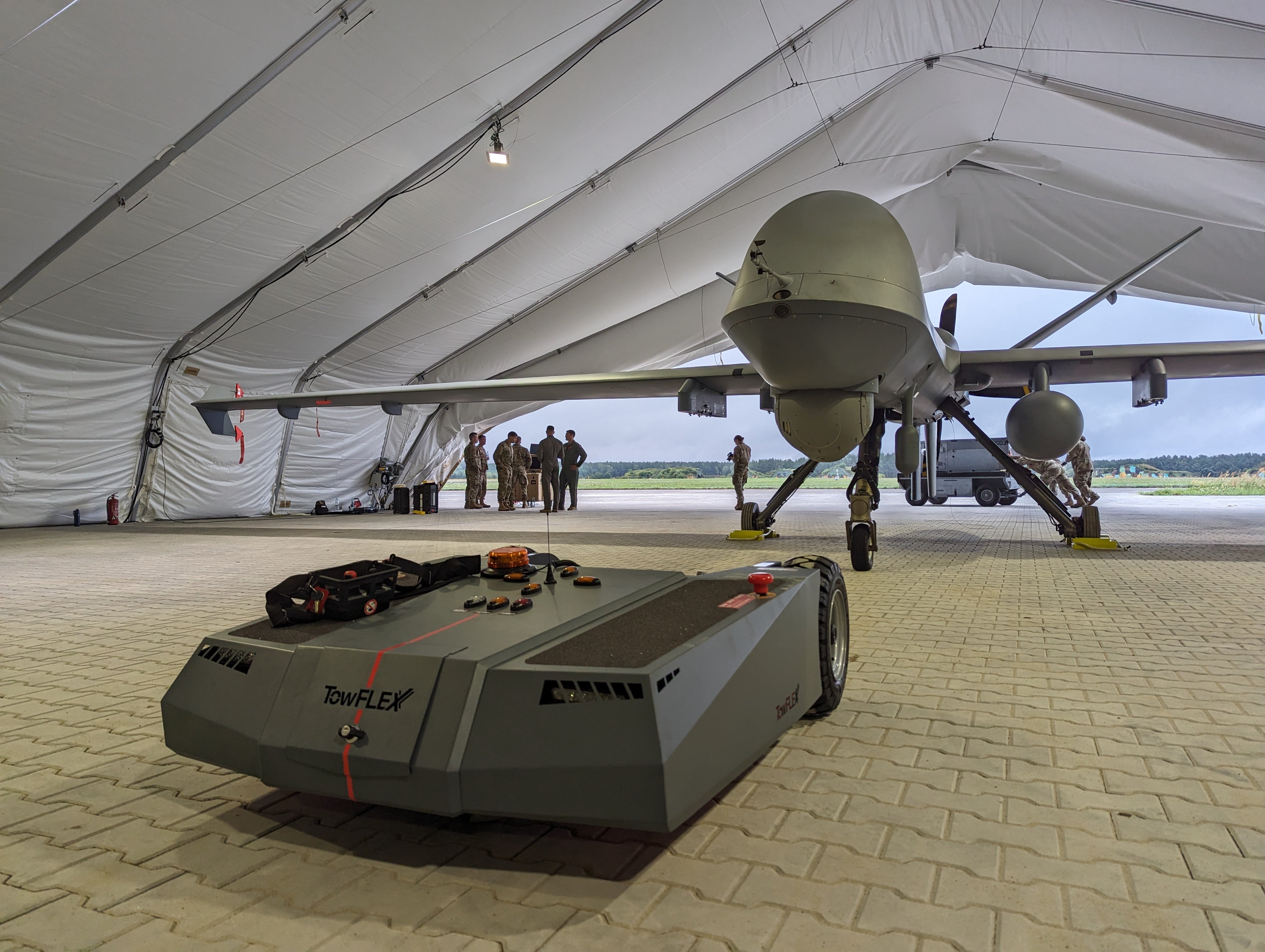
Additionally, the ministry unveiled plans to buy MQ-9B Reapers, which would make the Polish Armed Forces the first military along NATO’s eastern front to buy the medium-altitude, long-endurance drone. Before the deal was signed, a ministry official told Defense News the drone acquisition is related to “the difficult situation on Poland’s eastern border” with Ukraine, which is still fighting off a Russian invasion.
Polish forces are using the leased MQ-9As “in surveillance areas of interest, including along Poland’s eastern border” in order to “facilitate the collection of surveillance data within the field of imagery intelligence … and signals intelligence,” a spokesperson for the ministry told Defense News last month.
Meanwhile, Poland is advancing talks with General Atomics. “Currently, there are ongoing negotiations with the supplier of this weaponry. In line with the Technical Modernization Plan [for the Polish Armed Forces], the MQ-9B Reaper acquisition is planned for the year 2024,” the spokesperson said.
Once that acquisition is complete, the 12th UAV Base will be ready to support the new Reapers with lessons learned from hosting the U.S. Air Force’s 52nd Expeditionary Operations Group Detachment 2 and its MQ-9 fleet for the past several years.
The base became familiar with some support functions such as fueling, fire protection and pre-accident planning, said Szubiński, the base’s commander.
“Learning to operate the aircraft and, more importantly, integrating it into combined arms of the Polish military requires some time,” he explained. “But we’ve certainly taken the first and, by some accounts, the most critical steps.”
Jaroslaw Adamowski in Warsaw, Poland, contributed to this report.
Vivienne Machi is a reporter based in Stuttgart, Germany, contributing to Defense News' European coverage. She previously reported for National Defense Magazine, Defense Daily, Via Satellite, Foreign Policy and the Dayton Daily News. She was named the Defence Media Awards' best young defense journalist in 2020.
